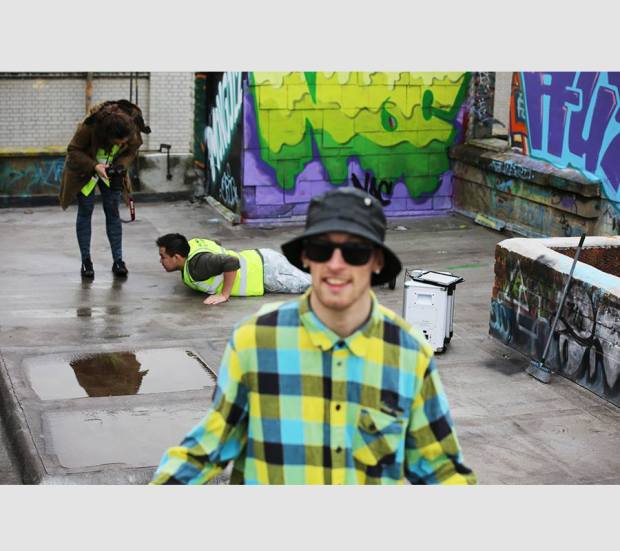Today, we filmed our two dancers for our b-boy pillar, which is one of the five pillars of hip-hop. We decided to use two locations; the rooftop and an underpass. This enabled us to get a variety of shoots and dimensions.
As expected, we found it hard to capture the dancer’s movements with a variety of angles due to the spontaneity of his moves. Therefore, we used two cameras. One of our cameras focused on close-ups of his feet and hands, whilst the secondary camera was used for wide and long shots. This means we have a good mix of angles and frames for the editing, to make it flow well as well as not being so static, which wouldn’t sit well with the hip-hop genre.
We used the legal graffiti wall, which Tom, our graffiti artist, had painted on. As well as being very colourful and urban, this creates a connection between the five pillars.
